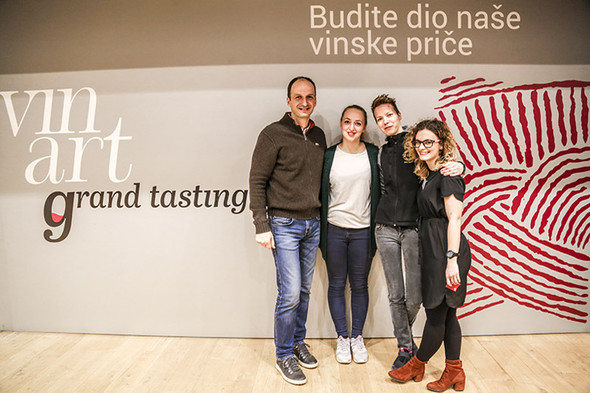Even tasting systematically for a day, I was only able to get through a quarter of the offerings at the Zagreb Vinart Grand Tasting. One hundred Croatian and twenty foreign wineries exhibited at the wine festival, organised for the second time this year. The organisers had carefully filtered beforehand who would be part of the selection. Prior to the two-day tasting, twenty masterclasses over four days provided the opportunity to deepen your understanding of a variety of subjects.
This kind of four-day masterclass marathon dealt with topics, wineries and wine regions such as Grgić, Krauthaker, Nikolaihof, Chateau Mouton Rothschild, Champagne Charles Heidsieck, Boškinac, Postup, Grenache and many other similar subjects. The last day of the masterclass series afforded me the opportunity to talk for an hour about Villány Franc, more precisely about the Villány wine region with the help of six wines. The 30-40-strong audience was in a very interactive and questioning mood compared to other similar events. The Ruppert and the Gere Tamás és Zsolt were the audience’s favourites; the latter then presenting at the following fair, the only Hungarian winery invited.
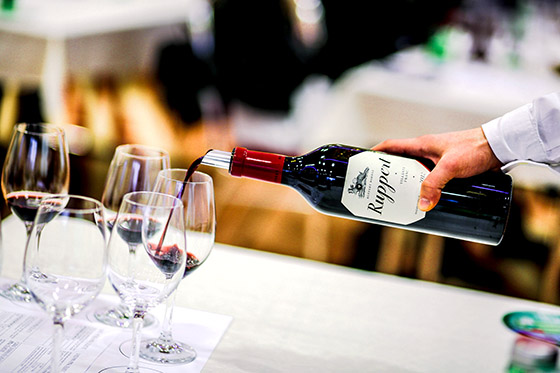
There are older, larger wine festivals than the Grand Tasting in Croatia, but the focus of this event, without doubt, was quality. The Lauba Gallery, with its high ceiling and spacious hall, was the ideal venue. A one-day tasting ticket cost 150 kuna, and you could spend 40 kuna of that in the pop-up wine shop, where you had the chance to browse through the wines of the exhibiting wineries. It was a great idea as they sold plenty of wine.
My best laid time plans of course came to nothing; you only have to bump into one or two acquaintances for your schedule to be thrown out. At the beginning, I tried to be quick and efficient, doing the rounds alone of wineries, mostly little known to me. So, I started with the Istrian Dobravac winery, based in Rovinj. Their Suite 2016 is a light Malvazija Istarska, whereas the Sonata 2015 from the same variety is a tighter, more full-bodied version. The third white, the Simfonija 2009, also contains 20% Chardonnay; this is practically an orange wine, a skin fermented, barrel-aged, dense, massive wine.
The next winery was the Slovenian Marof, where I had previously tasted some really great Olaszrizling and Kékfrankos. They had brought their Marof Grand Vin range, a series of vineyard-selected wines, but were a bit short on entry-level, lighter wines. The Bodonci Sauvignon Blanc 2015 was perhaps the most lively, fresh and vibrant wine, the Kramarovci Chardonnay 2015 a classic oaked Chardonnay, while the Bodonci Laški Rizling (Olaszrizling) 2012 I thought was a little past its best. The Mačkovci Modra Frankinja (Kékfrankos) 2011 vintage was the best Slovenian Kékfrankos I’ve ever tasted, whereas the current vintage (2013) is still very young, a little rough, but from good raw material; it has potential.
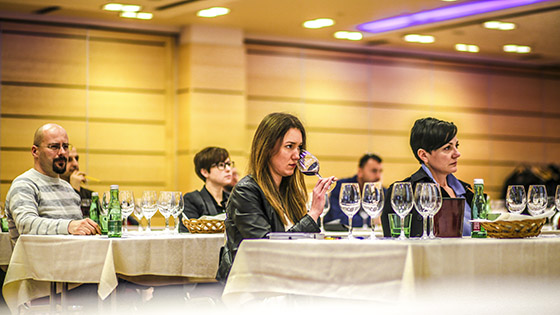
The neighbouring winery was one of the fair’s highlights. The Serbian Matalj winery is located near Negotin, close to the Bulgarian border. Their Sauvignon Blanc Teresa 2015 brought out all its varietal character, but was a much more layered, mineral and longer wine. It was the loveliest, most exciting Sauvignon Blanc I found, and I tasted plenty of them. The Chardonnay Teresa 2015 was balanced and well-made, as was the Kremen Cabernet Sauvignon 2015, a fruity, well-structured, very quaffable red wine. The highlight was the Kremen Kamen Cabernet Sauvignon 2013, a big wine, but not heavy or weighty, it has just as much as it needs and is already elegant, although just beginning its journey.
Back to the Croatians and back to Istria. I hadn’t really been familiar with the Radovan winery beforehand. The 2015 Malvazija was holding up extremely well, rounded and very drinkable. The Refošk was also a well-made, light red wine with good acidity. We had a similar experience at the Veralda stand too, although maybe their Malvazija was a little more filigree, whilst the Refošk was in good shape.
We tasted Krešimir Ivančić’s (Plešivica) new-look wines first; there was one sur lie, a slightly oaky Chardonnay 2015, then a Griffin Single Vineyard 2015 (which is actually an old-vine Müller Thurgau), then a Dark Side, which is a more mature 2015 Portugieser – it was really good. Two sparkling wines completed the flight: the Lady sec and the Zero natur brut, the first more a crowd-pleaser, the second more refined.
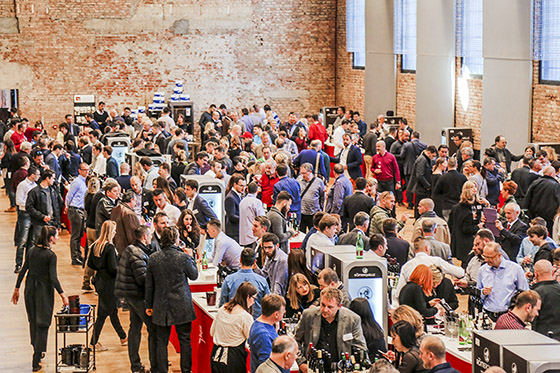
One great discovery of the day was the Sladić winery. The Skradin, i.e. Dalmatian, showed some wonderful local varieties: a fresh, skin-contact Maraština among the whites, Plavina-Lasina rosé and the same varieties in a red blend. Single varietal Lasina shows unique characteristics somewhat like Kadarka, a very food-friendly southern-style light, red wine with good acidity. The Tribidag was a barrel sample, but it certainly has a future. An exciting, clean, well-balanced wine, which had unfortunately run out by the time I got to the wine shop, but I signed up to buy some.
The Istrian Deklić winery is run by two siblings. The 2016 fresh Malvazija was a very clean, fruity wine, the Chardonnay a similarly good, reductive, crisp wine. I also liked the 2015 Teran, as did the winemakers, I think, as on that day it was made public that the European Commission had ruled in favour of the Croatians in the Slovenian and Croatian dispute over the use of the name, meaning they will also be able to continue to use the Teran varietal name for their wines.
I’d just like to highlight one more winery and wine. Gracin winery’s Babić 2013 has been the most prominent (and probably the most expensive) example of the variety for several years. Leo Gracin however has now taken it to a new level, as he has produced a wine together with the Pelješac producer Vedran Kiridžija. It’s a blend of Babić and Plavac Mali, the two typical wines of the two wine regions. The 2012 blend is called Kontra and was a very meaningful close to the day.
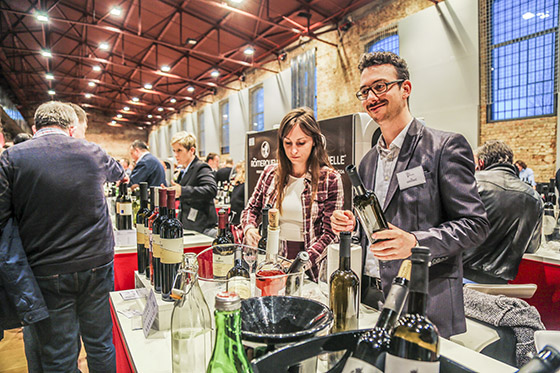
The selection was really stunning, maybe even the two days wouldn’t have been enough to taste everything; there wasn’t even enough time to make proper notes at the thirty producers where I tasted. However, I was pleased to see that an increasing amount of harmonious Dalmatian wine is being produced, the whites are fresher, the reds are cleaner, and the Istrians are making great strides too, especially with Malvazija and Teran. I didn’t really taste much from close to Hungary, as I often get over to the continental parts of Croatia.
I have been actively following the development of the Croatian wine culture for more than a decade now. There are wine regions which are better, there are those that I’ve not learnt so much about during this time, but whose development is also evident. Especially given that such a festival has come about too.
Saša Špiranec, the founder and main organiser of the Vinart Grand Tasting, says that they wanted to create a place where winemakers, wine merchants, restaurant owners and sommeliers as well as curious consumers can come together every year. This is primarily a professional forum, though of course not a closed group, but one which is trying to avoid being a ’mass event’.
Photos: Morana Popovcic



